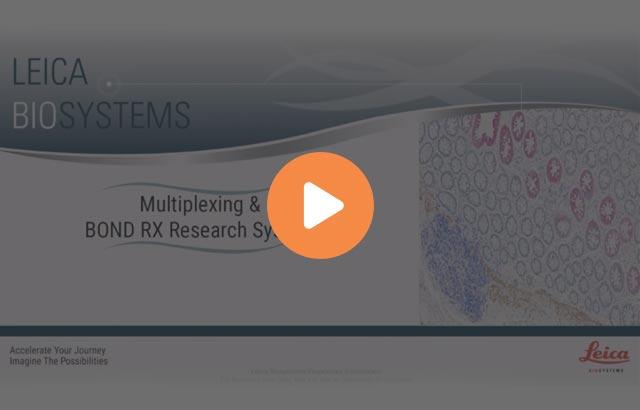Aperio GT 450 Imaging Technology

Webinar Transcription
Speaker
Hello everyone. My name is Peyman Najmabadi. I'm the director of R&D for the imaging solutions business unit of Leica Biosystems. I've worked in the field of digital pathology since 2007 and I have been involved in the development of multiple Aperio digital scanners, including the recently released Aperio GT 450. My background is in mechanical and industrial engineering. I have a Ph.D. from the University of Toronto and my research was focused on lab robotics and automation.
This presentation is an overview of some of the core imaging technologies of an Aperio GT 450 scanner.
Agenda
Here's the agenda. The key elements selected as shown directly impact the quality of the scanner final output. They correlate with each other and in some cases they are in trade off with other scanner performance aspects such as the scan speed.
It is an interesting engineering challenge to satisfy these elements in balance and meeting customers’ requirements. I'll try to provide an overview of these challenges and how we have addressed them in the Aperio GT 450.
Selected areas that will be discussed here are imaging optics or specifically objective lens and its associated tube lens, sample illumination, focusing algorithm and method, tissue finder technique and finally, system and color calibration.
Objective – Increased FOV
Let's just start with objective and its associated tube lengths. Objective lens is the main optical component of imaging optics of a digital scanner.
Field of view (FOV) of the objective impacts the speed of this scanner. We needed to increase this field of view in order to achieve our desired 40x scan speed. However, careful considerations need to be taken into account to make sure that this increase wouldn't impact the image quality.
For Aperio GT 450, we were able to design and manufacture a custom 40x objective. This custom objective has a field of view of 1mm, which is twice the size of a standard objective field of view.
Extra optical corrections designed in these custom objective for field curvature, lateral and off-axis aberrations guarantees very high image quality at 40x resolution with much wider field of view.
Illumination – More efficient light delivery
Here related to the performance of the objective is the sample illumination.
As the field of view of the objective has increased, it is essential to provide an even and glare-free illumination across the wider field of view.
In addition, in order to reach to our desired 40x scan speed, we selected a very high speed 4K trilinear color camera. Dense light with minimal impact to the sample needed to be designed. In Aperio GT 450, we designed a custom color illumination using daylight LED as the illumination light source. This efficient custom design delivers dense and even illumination across the wide objective field of view, as shown in the graph of this page.
Focusing- Real Time Focus (RTF)
Let's switch to focusing method and algorithm, another very important aspect that is essential for both image quality and scan speed. Aperio GT 450 has been built based on a new and patented autofocusing technology called Real Time Focusing (RTF).
Utilizing this technology, scan speed and excellent image quality are achieved. Real time focusing is based on using a second line sensor for auto focusing in real time as this scan continues.
Data from the focus sensor is processed in real time and fed back to drive the objective to the optimal focus height, while imaging sensor acquires the image data. This provides the best focus quality without any time penalty to scan speed. Using real time focusing technology, focus quality is assessed in real time for every image buffer. As an example, real time focusing technology utilizes 450 focus points for a 15mm by 15mm scan area in comparison with around 15 focus points, which is normally utilized using traditional focus map method. This increases the overall focus quality without the scan time penalty and provides a very high scan success rate.
Tissue Finding – High-res Macro Image + Dual Illumination
One other fundamental element for high scan success rate and image quality and efficient scan as far as the scan area, is accurate tissue finder. Aperio GT 450 utilizes a method for acquiring two high resolution macro images using dual illumination. This technique combined with image analysis, provides a precise tissue finding output.
High resolution macro imaging enables faint and small tissue samples detection. Dual elimination technique provides two micro images.
Bottom illumination captures base macro image containing tissue signal. Top illumination captures noises on this slide, such as the scratches and fingerprints.
Using real time image processing on these two images, we were able to accurately exclude cover slip artifacts from the top illumination macro image, resulting to a highly accurate tissue finder.
System Calibration
What we have discussed so far was related to the main optical components in the main imaging optics as well as focusing optics.
As mentioned, we needed to custom design optical elements, invent new focusing and novel tissue finding methods to provide higher scan image quality at 40x resolution, and scan success rate while meeting our desired ultra-fast scan speed.
These elements integrated in a system can consistently provide high image quality when the overall system is engineered and manufactured around optimal system and optical calibration methods.
Aperio GT 450 is manufactured with a series of one time manufacturing calibrations such as pixel size calibration and parfocality to ensure consistent autofocusing output.
In addition, in order to provide reliable tissue finder and best image quality, a series of calibration per slide is performed during a scan workflow without any time penalty to overall scan time. For example, the dark and white camera noise and illumination corrections.
In Aperio GT 450, every slide is calibrated during the scan for optimal image quality.
Color Calibration
What we have discussed so far were some of the key elements in the scanner to assure production of the highest image quality digital images at 40x resolution. However, the journey of digital pixels doesn't end at the image capture device. These pixels are eventually displayed on monitors.
It is equally important to make sure the entire digital pixel pipeline, from capture to display, is taken into consideration for the highest fidelity display on monitors.
Display calibration and color correction is an essential part in this end-to-end calibration.
In Aperio GT 450, a unique color correction profile, or ICC profile, has been generated for the scanner and associated display monitor to make sure that the color displayed on the monitor matches the picture or color of the stain when viewed on their daylight illumination.
This is the most accurate representation of this slide when it is converted to digital slide and viewed on a monitor versus a typical microscope.
Thank You
This concludes our brief presentation. I would like to thank you all for your time and attention. I hope you found this presentation informative and it brought some additional insight about the technique and technologies developed in Aperio GT 450 in response to customers key requirements.
At this time, we open up with the Q&A session. Thank you all very much.
About the presenter

Peyman Najmabadi has a background in mechanical and industrial engineering, Mr Najmabadi is passionate about developing innovative solutions to advance cancer diagnosis and patient care.
Related Content
Leica Biosystems content is subject to the Leica Biosystems website terms of use, available at: Legal Notice. The content, including webinars, training presentations and related materials is intended to provide general information regarding particular subjects of interest to health care professionals and is not intended to be, and should not be construed as, medical, regulatory or legal advice. The views and opinions expressed in any third-party content reflect the personal views and opinions of the speaker(s)/author(s) and do not necessarily represent or reflect the views or opinions of Leica Biosystems, its employees or agents. Any links contained in the content which provides access to third party resources or content is provided for convenience only.
For the use of any product, the applicable product documentation, including information guides, inserts and operation manuals should be consulted.
Copyright © 2025 Leica Biosystems division of Leica Microsystems, Inc. and its Leica Biosystems affiliates. All rights reserved. LEICA and the Leica Logo are registered trademarks of Leica Microsystems IR GmbH.


